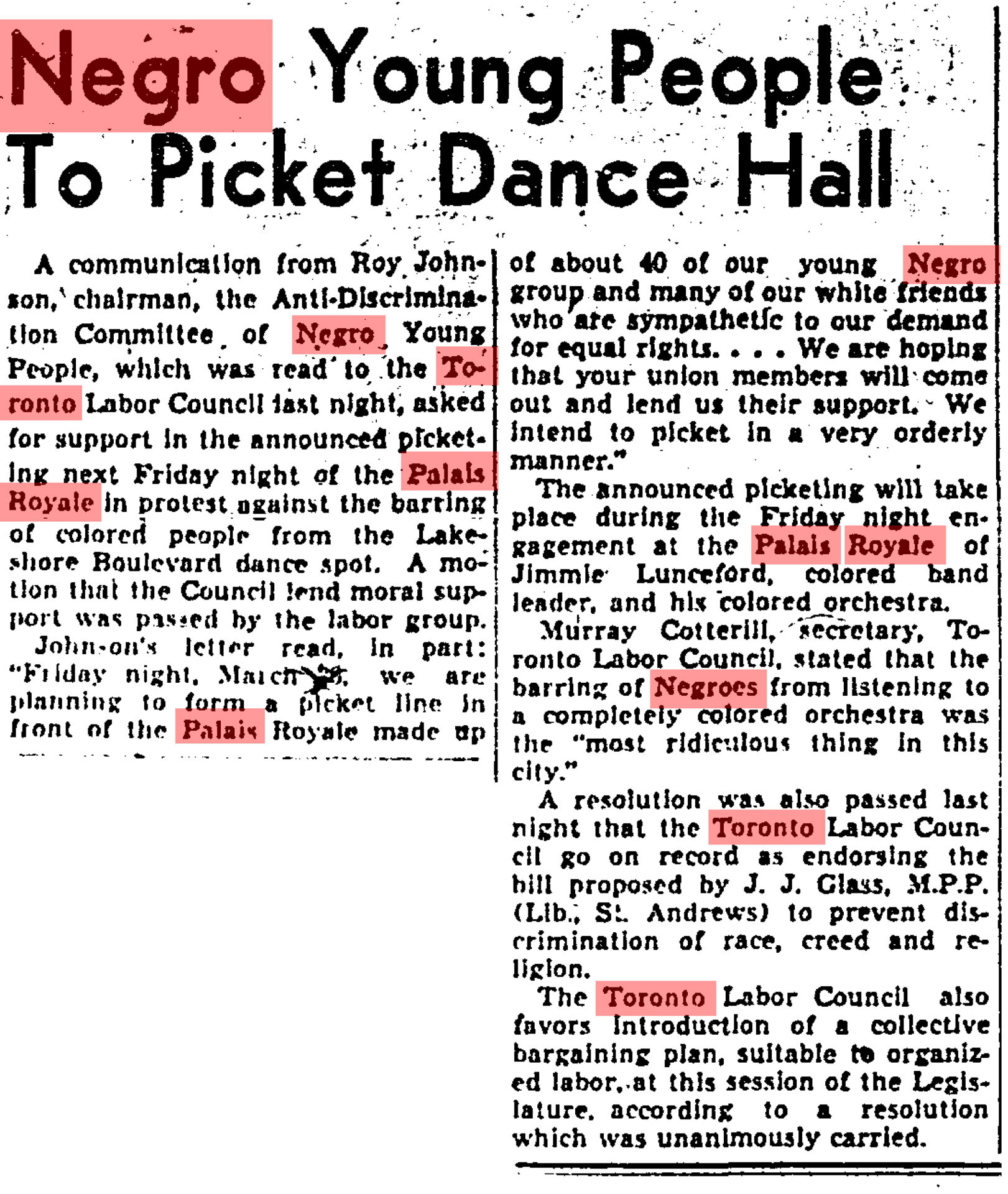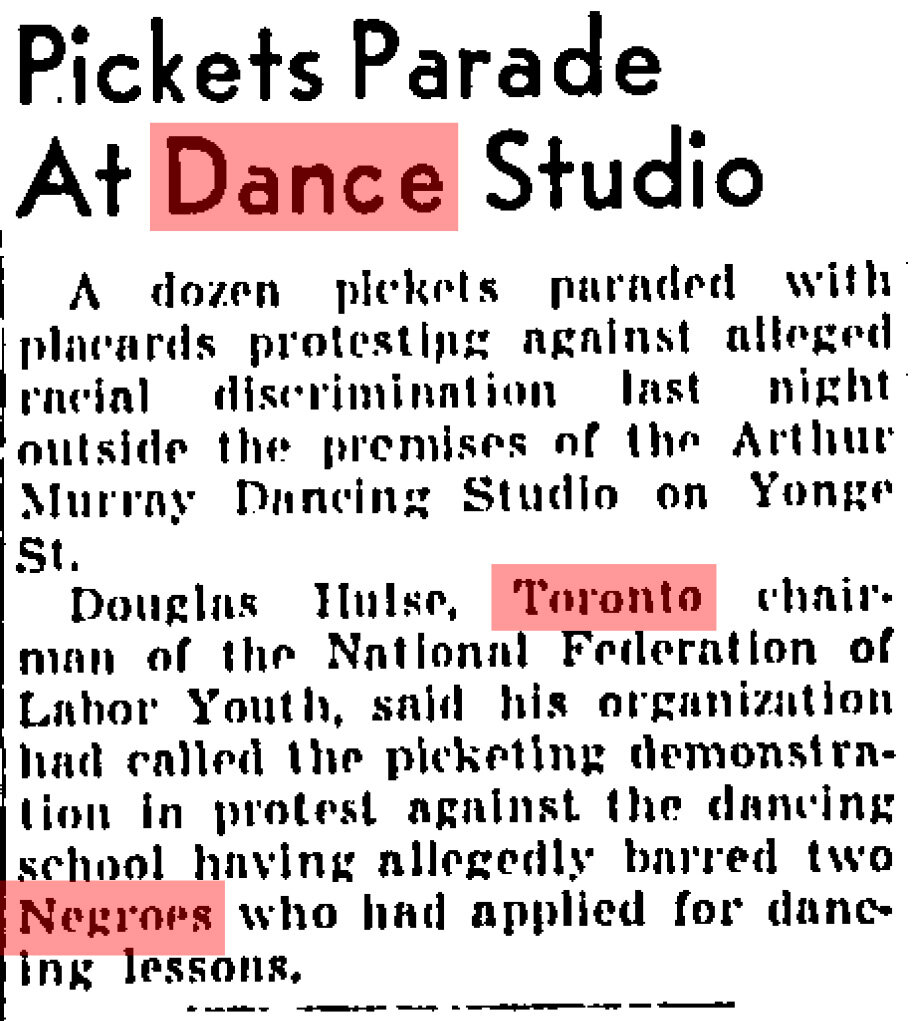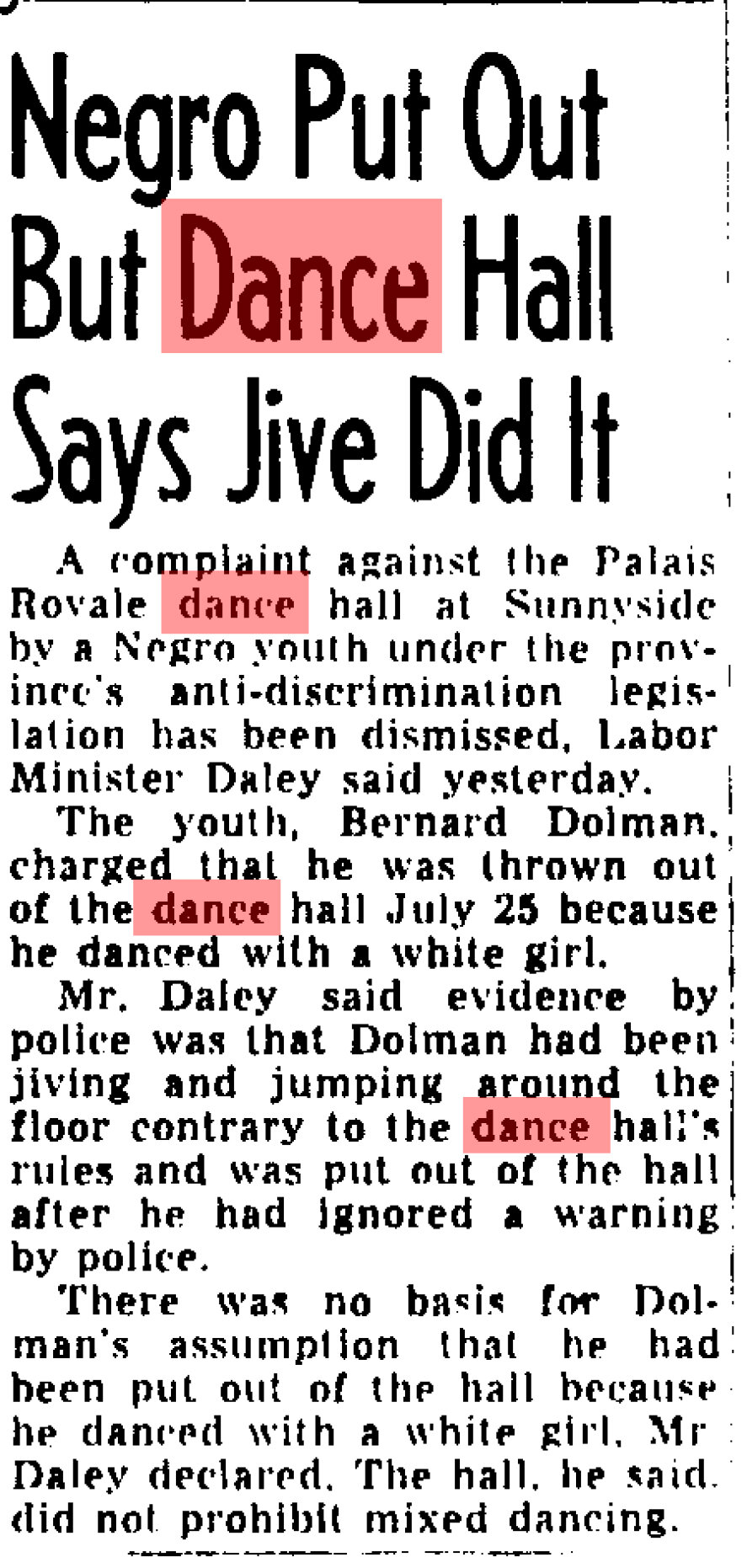Legislation and Protest
[T]he social history of Blacks in Canada is inextricably bound to the question of the law — more so than any other historically disenfranchised group in Canada, save for its First Nations Peoples.
— Barrington Walker
The African Canadian Legal Odyssey (2012)
When we ask the question: Where were Black people dancing in Canada before 1970?, we are asking: Where was it legal to dance? Where was it safe to dance? Where was it fun to dance? Where were Black people free to dance as they wanted?
In 1785, nearly fifty years before the abolishment of slavery in the British Empire, and Canada as one of its colonies, Black Loyalists (American slaves who fought for the British during the American Revolution in exchange for freedom and land) in Shelburne, Nova Scotia, were subject to a ban on “frolicking”, dancing or gambling. A year later, public gathering was added to the ban. Dancing or gathering was punishable by law. It was considered a disturbance and a threat to white society. Frolicks involved adaptations of dances, songs and ceremonies brought to the Americas by forcibly enslaved people from many different and vastly diverse African countries and cultures.
While immigration laws provided the government with power to directly restrict non-white, non-Anglo-Saxon peoples access into the country by, for example, the Chinese Head Tax, legislation affecting leisure culture — dining, entertainment, dancing, swimming — did not overtly ban participation by Indigenous, Black, Jewish and other people of colour. Instead, it did not punish racist actions by individuals or institutions who refused people access to or participation in leisure activities based on “race, creed, class or religion.” There was simply no consequence for these actions. This began to shift in the late 1940s, the post-World War II era when Human Rights were being reconsidered internationally due to the devastation of the Holocaust. In Canada, changes happened first at municipal and provincial levels. In Toronto and Ontario, equal rights advocacy was led by many outstanding individuals including African-Canadian Harry Gairey whose son was refused entry into the Icelandia skating rink. Human rights advocacy was also a joint effort between Black, Jewish, Japanese and other oppressed populations.
Legislation especially impacted where people could dance socially. Restaurants, bars, dance halls and clubs would often have signs stating that no “Negroes or Jews” were allowed. When signs were made illegal, people would simply be refused entry. When this became illegal, racialized dance forms such as the jive would be banned. This insidious exclusion made it difficult to prove that intentions were overtly racist and targeted. In the late 1940s and into the 1950s and ’60s, protests against discrimination by dance venues became more frequent and governments were eventually forced to respond.
The focus on preventing people of different racialized backgrounds from dancing together is indicative of a fear of miscegenation – ‘mixed-race’ reproduction. This is a symptom of eugenics thinking and policies implemented by the Canadian nation state in an attempt to mold an ideal citizenry – white, educated, middle class. Eugenics policies and their agents work to control reproduction and encourage selective breeding not only based on race but on class, and ability. This thinking was used to justify the forced and coerced practices of institutionalization of disabled and labelled-as-disabled people, sterilization, forced birth control, and residential schools. Legislation focused on dancing is about much more than what happens on the dance floor, it can also be an attempt to control the demographics of future populations.
To learn more about eugenics in Canada see www.intothelight.ca.
For further information on legislative changes in Ontario, Alberta, and British Columbia, see these timelines:


